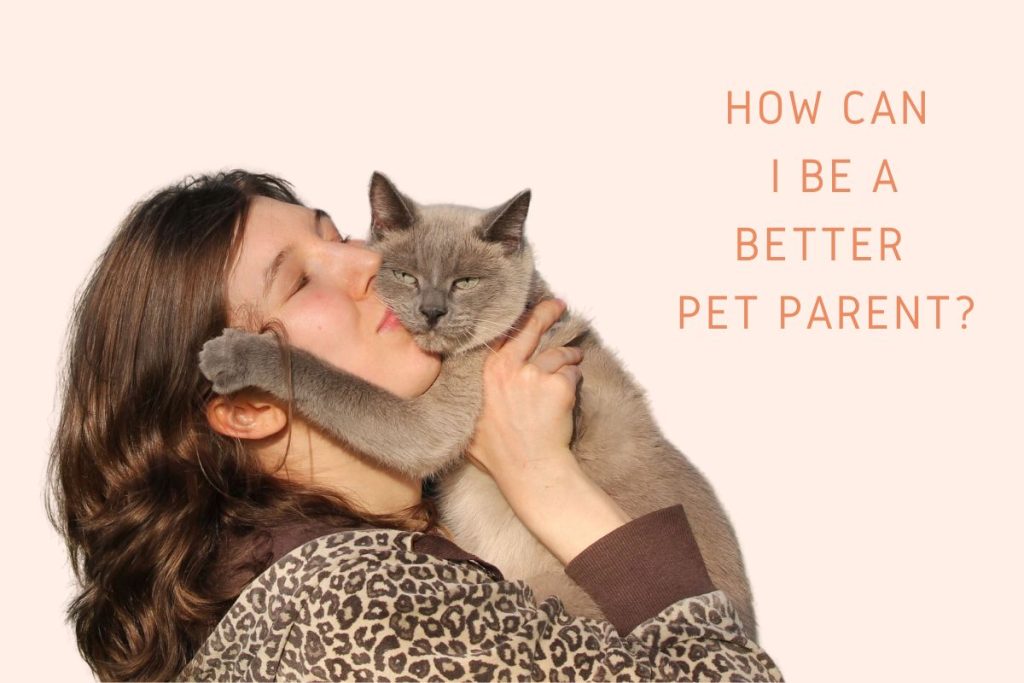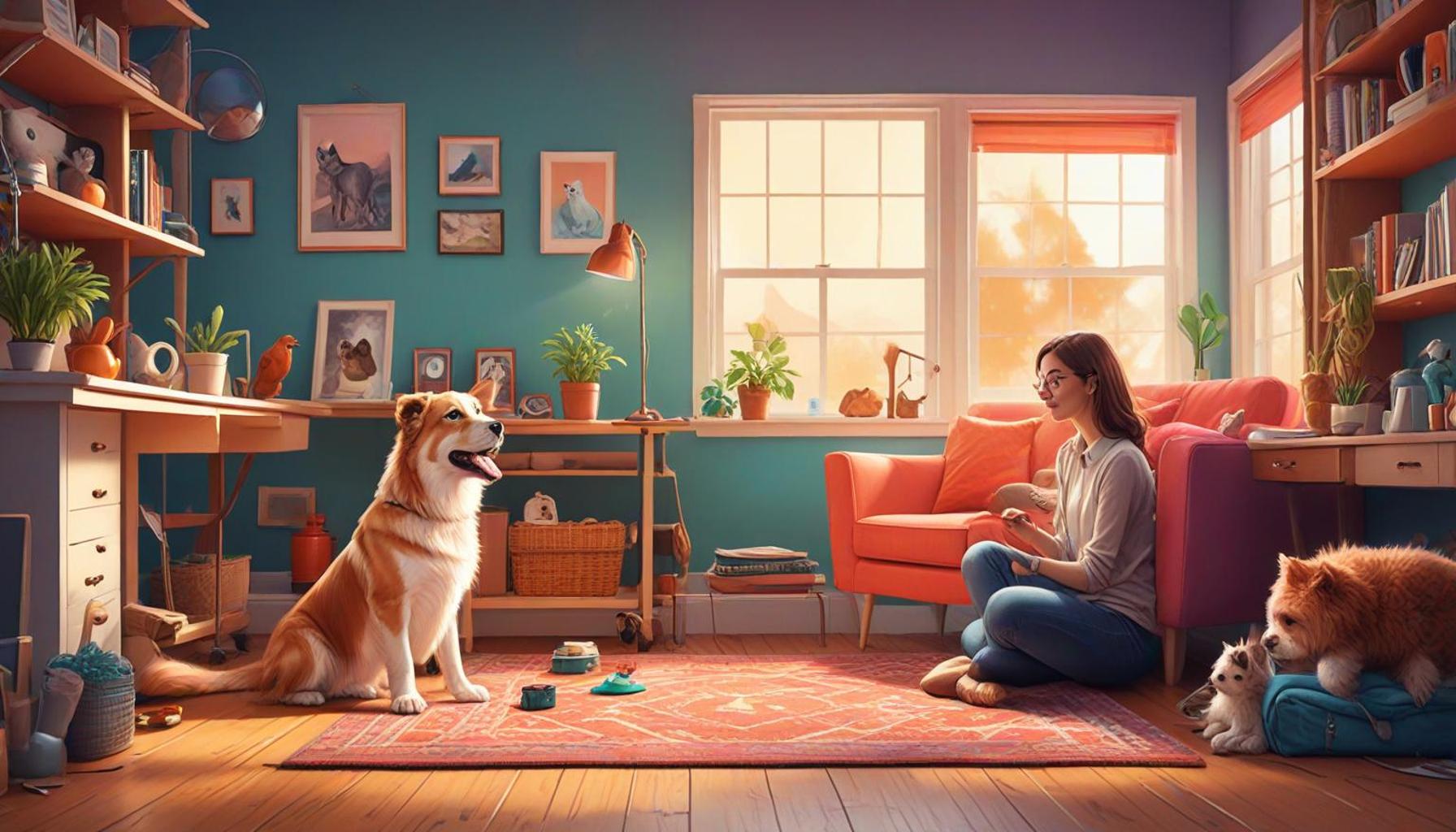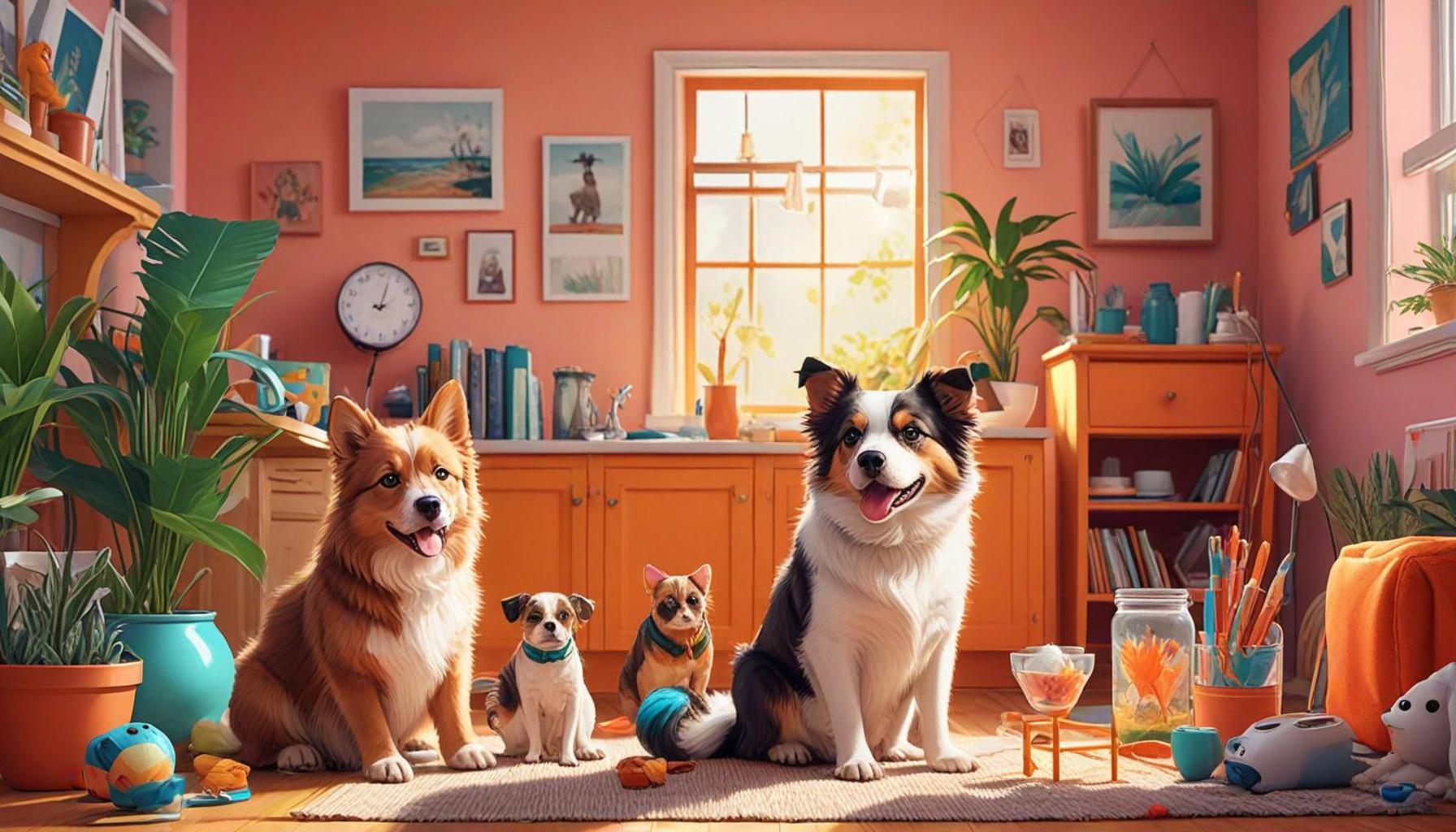Understanding the Behavior of Dogs and Cats in Urban Environments

Understanding Urban Pets
The fast-paced lifestyle in urban areas presents a distinct set of challenges for pet owners, particularly for those living in Nigeria’s bustling cities like Lagos or Abuja. As dogs and cats adjust to their concrete jungles, their behaviors evolve in fascinating ways. Exploring these adaptations not only aids in proper pet care but also enhances the human-animal bond in such vibrant settings.
Noise Levels and Their Impact
Urban environments are characterized by a cacophony of sounds, from honking vehicles to construction work and bustling pedestrians. For many pets, especially dogs, these noise levels can induce stress or anxiety. Studies show that dogs may exhibit signs of fear, including barking excessively or seeking refuge in dark corners of the home. Some breeds, particularly small terriers known for their spirited nature, can become even more agitated, requiring special attention and training to manage their reactions.
In contrast, many cats tend to be more territorial. They might claim their favorite spots in a home, responding to external sounds with a watchful demeanor. For instance, a cat residing in an apartment with a view of a busy street may react differently than one in a quieter suburban area, often showing signs of curiosity or fear, depending on their exposure to the urban environment.
The Role of Socialization
Another important aspect to consider is socialization. Urban settings offer a diverse tapestry of interactions, as different neighborhoods present unique dynamics among pets, strangers, and their owners. Dogs are often exposed to unfamiliar faces and other animals, which can lead to improved social skills if managed correctly. For example, a golden retriever may become more sociable as it encounters children and other dogs at a local park. On the other hand, some dogs could become overly defensive or aggressive due to frequent encounters with stray animals.
Cats, typically more solitary by nature, may feel challenged in urban spaces as overlays of interaction force them to behave differently. Feral cats in Nigerian cities, for instance, often form colonies, relying on one another for companionship and survival. Understanding these social dynamics can help pet owners better engage with their own cats and promote more harmonious living arrangements.

Space Limitations and Their Effects
One of the most significant challenges posed by urban living is space limitations. Many city dwellers live in apartments or homes with minimal outdoor access, which can drastically affect the exercise habits of pets. Dogs require regular walks and playtime, and without adequate space, they may develop behavioral issues such as obesity or hyperactivity. Investing in dog-friendly parks, even in urban settings, becomes crucial for their physical and mental well-being.
Cats also face challenges their natural instincts. While they may find creative ways to entertain themselves indoors, such as climbing furniture or playing with toys, the lack of natural stimulation can lead to boredom and anxiety. Therefore, providing a variety of toys, scratching posts, and vertical spaces for climbing becomes essential in urban households.
In summary, as dogs and cats adapt to urban settings, understanding their behavioral patterns is vital for fostering their well-being and enhancing their quality of life. Observing how pets respond to the environmental stimuli in Nigerian cities not only enriches their lives but also supports a positive coexistence within the community. Whether it’s adjusting to noise, encouraging socialization, or maximizing limited space, urban pet ownership requires both insight and commitment. By staying attuned to these dynamics, pet owners can cultivate a thriving environment for their furry companions.
SEE ALSO: Click here to read another article
The Challenges of Urban Life for Pets
In the heart of Nigeria’s urban hubs, the way dogs and cats behave is shaped significantly by their environment. As these animals navigate the vibrant yet overwhelming stimuli of urban life, understanding their unique challenges becomes essential for ensuring their well-being. From sensory overload to social interactions, pet owners need to be cognizant of what their four-legged friends experience daily.
Adaptation to Sensory Overload
Animals in urban areas encounter a sensory landscape drastically different from that of their more rural counterparts. Dogs, equipped with a keen sense of hearing, can be particularly affected by the voracity of urban sounds. Research indicates that sounds such as sirens, construction noises, and bustling crowds can trigger anxiety in dogs, leading to behaviors such as:
- Excessive barking in response to perceived threats or disturbances.
- Clinginess toward their owners as a method of seeking comfort.
- Escape attempts as a way to flee from panic-inducing noises.
Indeed, this heightened state of alert can be particularly challenging for breeds with historically higher sensitivities, such as Chihuahuas and Whippets, which may have developed an increased reactivity due to their smaller stature and nature. Urban dog owners should consider proactive measures like desensitization training, which is the process of gradually exposing pets to the stimuli that cause them distress in a controlled manner.
Managing Feline Nature in the City
Meanwhile, cats, which are generally more independent and territorial, tend to respond to urban living with a blend of curiosity and caution. The instincts of cats lead them to exhibit behaviors that highlight their adaptation to urban life:
- Increased territorial marking around their homes to establish their presence.
- Observation behavior from elevated positions, such as window sills or shelves, allowing them to stay attuned to their surroundings.
- Potential for stress-related behaviors, including over-grooming or aggression towards other pets.
Studies show that urban cats are often subjected to greater competition for resources, such as food and safe resting areas. Community cats frequently form colonies to cope with city demands, demonstrating a remarkable adaptability. This adaptation is vital for their survival, but it also highlights the necessity for owners to provide a stable and enriched home environment, complete with vertical spaces and interactive play opportunities.
The Impact of Pet Ownership on Community Dynamics
As urban pet ownership grows in cities like Lagos and Abuja, it is crucial to understand not just the individual pet’s behavior but also how these animals integrate into their communities. Dog walks can become social activities, paving the way for new human interactions, while also requiring responsible behaviors such as leash control and waste management. Similarly, fostering a deep understanding of feline behaviors encourages a responsible approach to keeping cats indoors where they are less likely to encounter danger from vehicles or aggressive animals.
In conclusion, navigating the complexities of urban life offers pet owners an opportunity to enhance their relationship with their furry companions. By grasping the nuances of how dogs and cats respond to the challenges of city living, owners can foster environments that support their pets’ well-being, leading to a happier and healthier life for both pets and their humans.
| Category | Advantages |
|---|---|
| Socialization | Urban settings offer opportunities for increased social interaction among pets, which is crucial for their behavioral development. |
| Stimulation | Diverse environments in towns provide mental and sensory enrichment that combats boredom, encouraging dogs and cats to explore. |
| Exercise | Access to parks and open spaces means improved physical health and fitness for pets through walking or playtime. |
| Adaptability | Living in urban areas fosters adaptability to various stimuli, preparing pets for different settings and situations. |
Urban environments present unique challenges and advantages for our furry companions. With the bustle of city life, dogs and cats are often exposed to a variety of sounds, sights, and scents that they may not encounter in quieter areas. This increased stimulation can greatly influence their behavior and overall development. Understanding these dynamics is essential for pet owners who wish to ensure optimal well-being. For example, dogs that regularly socialize with other animals in parks develop superior social skills and anxiety management abilities. Similarly, cats can benefit from the exposure to structured environments, honing their explorative instincts. By delving deeper into these aspects, pet owners can learn how to create a supportive atmosphere for their pets in bustling urban settings.
SEE ALSO: Click here to read another article
Socialization and Interaction in Urban Settings
Urban environments not only introduce challenges related to sensory overload but also influence the social behavior of both dogs and cats. Understanding these dynamics is crucial for pet owners wanting to foster healthy relationships between their pets and their surroundings.
Canine Social Dynamics
For dogs, urban living can present a double-edged sword when it comes to socialization. On one hand, dog parks and sidewalks become venues for interaction and play, providing essential social experiences with both humans and fellow canines. On the other hand, crowded areas can lead to overwhelming social stress for dogs that struggle with unfamiliar dogs or people.
Canine behavior experts recommend monitoring your dog’s reactions during playtime to ensure a positive experience. Signs of stress can manifest in various ways, such as:
- Tail tucking or avoidance behaviors, indicating anxiety.
- Growling or snapping, which may be a plea for space or a warning.
- Frequent attempts to escape from a stressful interaction.
Additionally, urban life often presents opportunities for reinforcement of positive behaviors through training sessions in bustling environments. Consistent and focused training helps build a dog’s confidence while mitigating undesirable reactions to urban challenges. In cities like Port Harcourt or Kano, engaging local trainers familiar with urban pet dynamics can provide tailored training programs that cater to specific behavioral issues triggered by city life.
Feline Socialization Challenges
In contrast, cats navigate socialization differently. Their innate territorial instincts can be exacerbated in high-density areas where the presence of other pets is more pronounced. Urban cats often exhibit varying degrees of sociability, depending on their upbringing and experiences. For instance, cats that are routinely exposed to various stimuli tend to be more adaptable, whereas those confined indoors can become skittish in the presence of pets they have not encountered before.
Moreover, indoor cats may develop unexpected associations, such as associating loud noises with threats. Pet owners can facilitate a more positive feline experience by:
- Providing safe spaces where cats can retreat if feeling overwhelmed.
- Enriching their living environment with toys and activities that stimulate their natural hunting instincts.
- Gradual introductions to new environments or other pets to reduce the likelihood of stress-related behaviors.
Interestingly, research indicates that indoor cats that engage in routine play and exploration of their environment tend to display healthier psychological characteristics, allowing them to adapt and thrive even in urban contexts.
The Role of Responsible Pet Ownership
As cities continue to develop, the responsibility of pet owners extends beyond individual pet care; it impacts the entire community. By understanding and addressing the behaviors of dogs and cats, owners can contribute to a harmonious urban pet environment. Encouraging responsible pet ownership ultimately involves:
- Educating the community on the importance of spaying and neutering to control pet populations.
- Organizing neighborhood walks or community events focused on pet etiquette and care.
- Advocating for safe pet spaces, such as designated parks, which accommodate the needs of both pets and their owners.
By fostering mutual respect and understanding among pet owners, urban residents can create a pet-friendly environment that emphasizes the well-being of all community members, both human and animal. With informed pet ownership and community engagement, the urban landscape can evolve into a nurturing habitat for dogs and cats alike.
YOU MAY ALSO LIKE: Read read another article
Conclusion: Navigating Urban Pet Dynamics
In the rapidly evolving landscape of urban environments, the behaviors of dogs and cats reveal much about their adaptability and our responsibilities as pet owners. As we have explored, socialization and interaction are pivotal in shaping the experiences of our furry companions within bustling cities. Dogs thrive on positive engagements and structured training to combat the stresses that can arise in crowded spaces, while cats require carefully curated environments that respect their natural instincts and territorial behaviors.
The importance of responsible pet ownership cannot be overstated in Nigeria’s urban centers, where fostering a community that values both human and animal welfare is crucial. Pet owners must not only focus on individual needs but also contribute to a culture of understanding and respect among fellow urban residents. This includes advocating for green spaces and community initiatives designed to integrate our pets into urban life harmoniously.
By recognizing and addressing the unique challenges that dogs and cats face in urban settings, we can cultivate an enriching environment that allows them to thrive. As cities continue to expand, let us invest time and resources into researching behavioral patterns and community education to ultimately enhance the quality of life for our pets and ourselves. Understanding the intricate balance between urban living and animal behavior equips us with the tools necessary to create a thriving community where both beings coexist peacefully.


